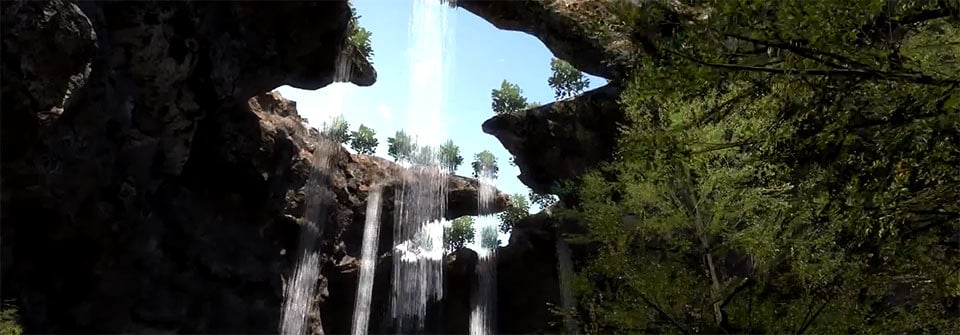
Even across the initial 120+ levels, The Talos Principle never runs out of ways to baffle you, and several puzzles contain even more trying obstacles for hidden stars. On its own terms, though, it is hard to fault the game’s inventive puzzles, which offer a satisfying mix of challenges just taxing enough to cause pause for thought and then larger, more elaborate trials that it’s possible to get stuck on for a good hour or more. If you’re yet to journey through the garden and beyond then you should absolutely be picking up The Talos Principle in VR, but the experience isn’t compelling enough to pull you through a second time unless you really wanted to discover more of the game’s multiple endings, or perhaps haven’t played the Road to Gehenna DLC, which is helpfully included here. Unlike Resident Evil 7, or even the ports of the Serious Sam games, there are no characters to establish deeper connections with or atmospheric tones that are greatly enhanced by the sense of presence there’s just pretty stuff to look.

That said, headset support is hardly essential to the experience and ultimately I didn’t feel like it was adding enough to warrant a second playthrough of a game I’ve seen through once before. Exploring the world of Talos Principle took me back to the DK1 days of the Oculus Rift where you could get simple joy out of just seeing an environment in VR. The vibrant world around you really shines inside headsets too this is one of the first VR games in a while that gives you time to stop, breathe and truly appreciate the world around you, with ornaments and objects that really feel like they’re there. Using the Vive wands or Touch controllers you can reach out and grab these nodes and then move around the world using one of a vast range of options the developer has supplied (which, again, deserves a pat on the back). Gameplay translates pretty naturally to VR thanks to its simplicity. Eventually, you’ll use these same devices to create circuits between switches, and levels will add additional layers like fans that can shoot you over to inaccessible areas. You set about solving challenges he’s laid out for you, which largely involve using turret-like nodes that can disable path-blocking shields, patrolling bombs and motion-sensing machine guns.
ANDROID THE TALOS PRINCIPLE BACKGROUNDS ANDROID
The computer terminals make a directional sound to aid discovery.The Talos Principle casts you as an android that awakens in a mysterious garden with an unseen being calling himself Elohim claiming to be your divine creator. You need to distinguish colour to guide you to the appropriate puzzles. These sounds provide directional indication of events. When you get lasers in the right place or open doors there is a sound accompanying the visual confirmation. Interactive objects are highlighted for visibility. You can select colour theme and adjust contrast. Then the game uses in-world signposts that updated to mark when you have completed them. Mission objectives, in terms of which pieces you need, are displayed in the Heads Up Display. You can resize the Heads Up Display so that text is substantially larger in the game, including dialogue choices. The computer text is quite small by default but can be resized so it’s large and of good contrast. You need to read text on computer terminals to answer questions and progress the story. The collections of puzzles are each in separate areas, if you leave that area you lose any unsolved puzzle progress (but solved puzzles are saved). The game doesn’t have difficulty settings as the challenge is focused on solving puzzles.
ANDROID THE TALOS PRINCIPLE BACKGROUNDS FREE
In this way the game explores the concept of human responsibility and free will, allowing you to choose the way the game ends.


Your world is a testing ground for AI that will make a new species to carry on humanity's legacy. You discover that you are in a simulation and that humanity was wiped out by a deadly virus unleashed onto the world when global warming melted the permafrost. Initially, a mysterious voice called Elohim tasks you to explore the world, but warns you not to climb the central tower.

In addition, you can find computer terminals and other information sources which can give you clues and add to the lore of the world. Collecting the sigils allows you to assemble jigsaw-like puzzles which allows you to progress to the next area. You navigating the terrain, which is a blend of the ancient and the far-future, and evade deadly traps. You explore environments to complete complex brain-teasing puzzles to collect "sigils". The Talos Principle is a narrative driven puzzle game, praised for its cerebral and philosophical nature, where you play an android with a human conscience.


 0 kommentar(er)
0 kommentar(er)
